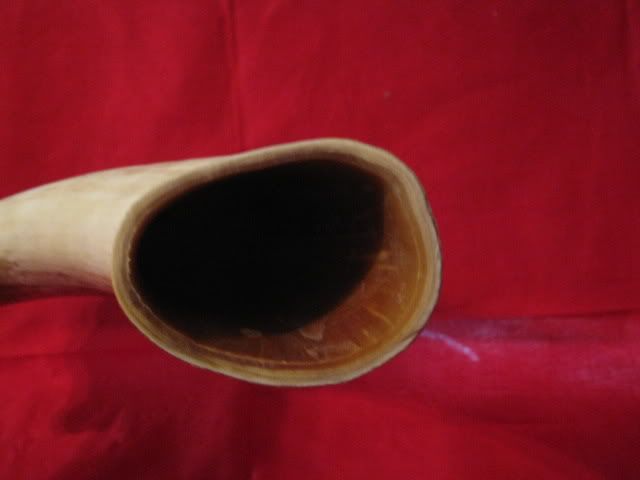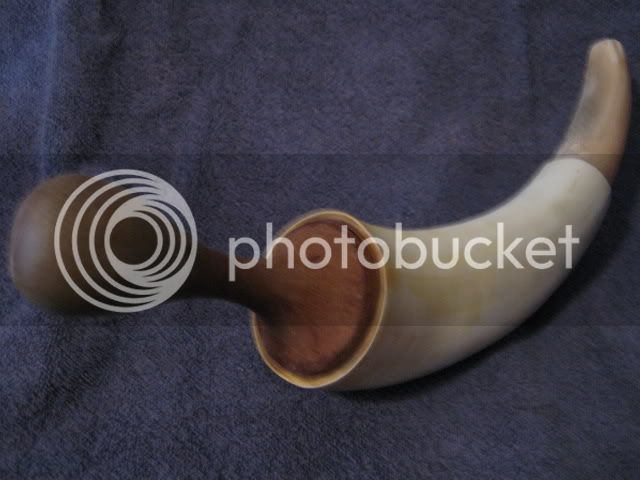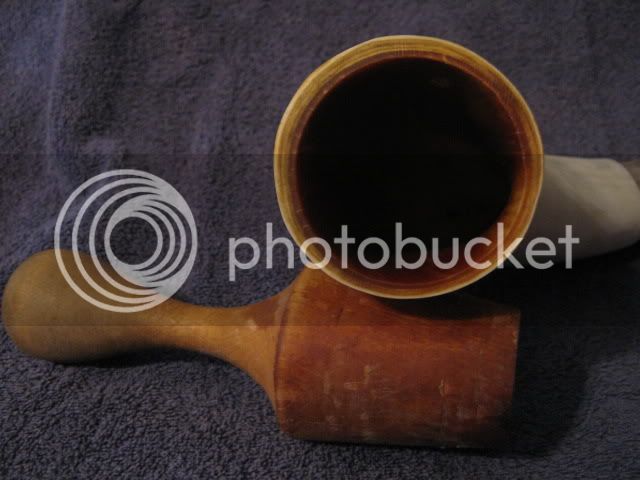- Joined
- Jul 7, 2007
- Messages
- 2,657
- Reaction score
- 13
For making a powder horn that is! ... I have received several PT messages on how to get a cow horn round for getting ready to make and fit a base plug.
The following is a few photo's of a horn I rounded that was a little more flat than normal. Note that the walls are fairly thick, so with the help of heat it shaped into a nice horn.
Thanks and hope this helps you folks who want to make a powder horn!
Rick
Horn just trimmed and squared before heating.

Horn heated with heat gun or hot cooking oil at around 325 degree's and then quickly forcing shaping cone into horn cavity to cool thoroughly.

Wood sizing cone removed and horn ready for making base plug.

The following is a few photo's of a horn I rounded that was a little more flat than normal. Note that the walls are fairly thick, so with the help of heat it shaped into a nice horn.
Thanks and hope this helps you folks who want to make a powder horn!
Rick
Horn just trimmed and squared before heating.

Horn heated with heat gun or hot cooking oil at around 325 degree's and then quickly forcing shaping cone into horn cavity to cool thoroughly.

Wood sizing cone removed and horn ready for making base plug.






